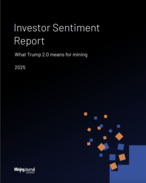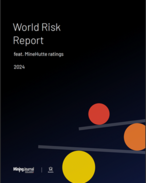This article is 8 years old. Images might not display.
Despite all this, Myanmar continues to attract global attention as one of the last mining frontiers. It is therefore important to take a closer look at recent steps that are being taken to address these long-standing challenges. Changes to the Mining Law have been implemented with the aim of promoting investment and Myanmar’s first Extractive Industries Transparency Initiative (EITI) report from 2015 is a tentative but promising step towards greater openness. Under the new political leadership, there is a clear opportunity to reform the mining industry.
Critical to GDP
Myanmar relies heavily on natural resources for income. Oil and gas, power and mining attract the lion’s share of the country’s Foreign Direct Investment (FDI). The export value of minerals was listed as US$1.15 billion in 2013-2014, and the Myanmar Gem Emporium is estimated to have sold $3.4 billion of gems and jade.
However, these figures do not reveal the full picture and Myanmar’s substantial black market and regular in-country stockpiling undermines its credibility and trustworthiness. That said, there is plenty of scope to extract more value from the mining industry – first, by legitimising the black market and secondly, by attracting sustainable FDI into the rehabilitation of existing projects and the development of new ones.
While it is not easy to address the deep-rooted nature of these challenges, it is essential the government tackle these issues head on. If successful, the rewards could include significant royalty increases to invest into infrastructure development and other social objectives within the country.
Changes to equity
Rather than a sweeping overhaul, recent changes to the 1994 Myanmar Mines Law rejig several discrete aspects of the current regime. The biggest change is to introduce the possibility of the Myanmar government taking equity in a project instead of the usual 30% entitlement under a production sharing contract. Compulsory production sharing has long been a sticking point with investors, and although the changes are not yet enough assurance for investors, it should be commended for being a promising step in the right direction.
Looking forward, the next stage should be for regulators to establish a clear regulatory framework for investors, including a procedure for divestment to the public sector and clear risk allocation and equity contribution terms.
Public private partnerships
One positive outcome of the changes to the mining law is that the door is now open to establishing a framework for public-private partnerships in the Myanmar mining sector. Co-operation between the state and the business sector can lead to a win-win situation with buy-in from local communities.
""Compulsory production sharing has long been a sticking point with investors, and although the changes are not yet enough assurance for investors, it should be commended for being a promising step in the right direction"
"
However, clear objectives and realistic assessments of each side’s capabilities must be established early on, to avoid complications further down the line. Partnerships where the private developer provides both technical expertise and funding for projects, while in parallel relinquishing control over operations, is bound to cause acute problems. Both state and partner must make clear where they stand and what they offer. The issues faced by the Oyu Tolgoi copper-gold project in Mongolia, where the government of Mongolia holds a 34% stake, is case in point and provides some valuable lessons.
Other changes to the mining law include a royalty reduction for some minerals, with the highest rate capped at 5%. Permit periods have also been extended to 50 years for large scale production and the maximum period for medium and small scale production changing to 15 years and 10 years, respectively.
Smaller projects
A further change is to allow investment in small and medium scale projects through a joint venture with a Myanmar company and applying for an expansion permit from the ministry of mines. If this is properly implemented at both a national and local level, it could provide an opportunity to redevelop artisanal or abandoned sites, which would reinvigorate rural communities and shore up environmental risks. Careful thought about how to approach this matter is a must and investors should conduct due diligence on local conditions and counterparties, as well as develop strong relationships with local communities.
The environment and exchange
In January, The Myanmar Ministry of Environmental Conservation and Forestry announced new requirements for assessing the environmental and social impacts of investment projects in the country. This is an important development in light of environmental damage that has reportedly arisen from artisanal mining and the use of antiquated mining equipment and techniques.
Myanmar also intends to establish an official market for gold and metal trading this year. The Myanmar Federation of Mining Association is currently working with the government to create the exchange, which could further increase the transparency and regulation of gold and metal prices in Myanmar.
Looking ahead
The end of the commodities boom has heralded a time of intense pressure for the global mining industry. If Myanmar’s mining industry is to become a success, it must focus on efficiencies, embrace clean energy and innovation, and manage environmental concerns according to global targets. While international assistance is available, all should be done in parallel with addressing domestic challenges.
As Myanmar opens up to the world, there is a clear opportunity to embrace change and to set the wheels in motion for the development of a sustainable and profitable mining industry.
*Authors: Marius Toime is a project finance partner in Berwin Leighton Paisner’s Singapore office and Chris Hughes is a corporate finance partner and head of BLP’s Myanmar office.























